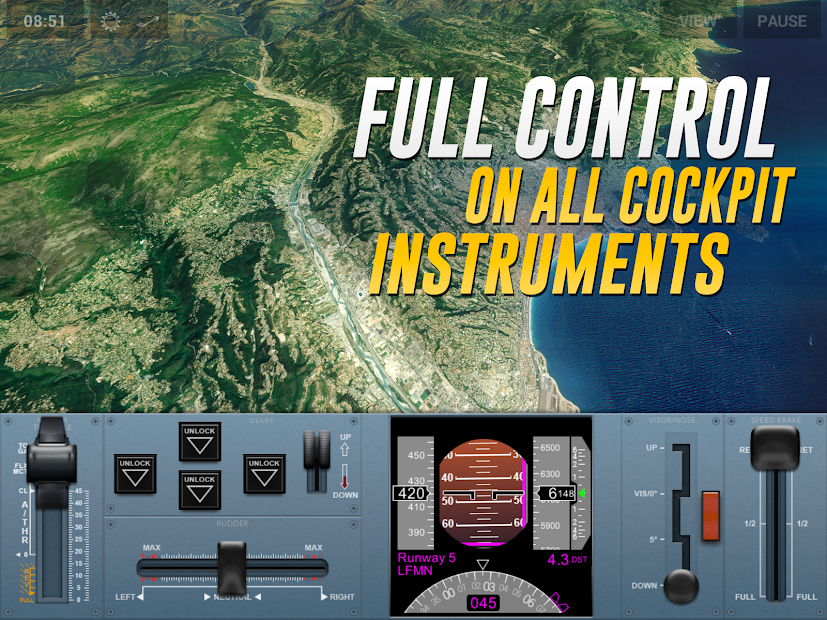

Less than a month later, another 737, TACA Flight 110, lost both engines due to bad weather but was able to make a successful deadstick landing on a grass levee on the grounds of NASA's Michoud Assembly Facility outside New Orleans, with minor injuries to the passengers and minor damage to the aircraft. įlight 1549 landing on the waters of the Hudson River The flight was successfully diverted to Kahului Airport with only one casualty, flight attendant Clarabelle "C.B." Lansing who was sucked out when the cabin depressurized.
#Instructions for extreme landings skin#
On April 28, 1988, Aloha Airlines Flight 243 experienced an explosive decompression when approximately 35 square metres (380 sq ft) of aluminium skin separated from the fuselage. In June 1982, British Airways Flight 9, a Boeing 747 en route from Kuala Lumpur to Perth flew into a plume of volcanic ash and lost power in all four engines, three of which subsequently recovered, eventually diverting to Jakarta. A famous example is the Gimli Glider, an Air Canada Boeing 767 that ran out of fuel and glided to a safe landing in Gimli, Manitoba, Canada on July 23, 1983. Large airliners have multiple engines and redundant systems, so forced landings are extremely rare for them, but some notable ones have occurred. Since 2003, research has been conducted on enabling unmanned aerial vehicles to perform a forced landing autonomously.

Glider pilots routinely land away from their base and so most cross-country pilots are in current practice. Light aircraft can often land safely on fields, roads, or gravel river banks (or on the water, if they are float-equipped) but medium and heavy aircraft generally require long, prepared runway surfaces because of their heavier weight and higher landing speeds. If there is a suitable landing spot within the aircraft's gliding or autorotation distance, an unplanned landing will often result in no injuries or significant damage to the aircraft, since powered aircraft generally use little or no power when they are landing. Pilots often practice "simulated forced landings", in which an engine failure is simulated and the pilot has to get the aircraft on the ground safely, by selecting a landing area and then gliding the aircraft at its best gliding speed. If there is no engine power available during a forced landing, a fixed-wing aircraft glides, while a rotary winged aircraft ( helicopter) autorotates to the ground by trading altitude for airspeed to maintain control. After the disabled aircraft makes contact with the surface of the water, the aircraft will most likely sink if it is not designed to float, although it may float for hours, depending on damage. Ditching is the same as a forced landing, only on water.The sooner a pilot locates and inspects a potential landing site, the less the chance of additional limitations being imposed by worsening aircraft conditions, deteriorating weather, or other factors. This may be as a result of problems with the aircraft, or a medical or police emergency. Precautionary landing may result from a planned landing at a location about which information is limited, from unanticipated changes during the flight, or from abnormal or even emergency situations.This means that the forced landing may even occur when the aircraft is still flyable, in order to prevent a crash or ditching situation. The pilot is essentially trying to get the aircraft on the ground in a way which minimizes the possibility of injury or death to the people aboard. It is caused by the failure of or damage to vital systems such as engines, hydraulics, or landing gear, and so a landing must be attempted where a runway is needed but none is available.

Landing as soon as possible is a priority, no matter where, since a major system failure has occurred or is imminent. Forced landing – the aircraft is forced to make a landing due to technical problems.There are several different types of emergency landings for powered aircraft: planned landing or unplanned landing. Flights under air traffic control will be given priority over all other aircraft operations upon the declaration of the emergency. It typically involves a forced diversion to the nearest or most suitable airport or airbase, or an off airport landing or ditching if the flight cannot reach an airfield.

JetBlue Flight 292 makes an emergency landing at Los Angeles International Airport.Īn emergency landing is a premature landing made by an aircraft in response to an emergency involving an imminent or ongoing threat to the safety and operation of the aircraft, or involving a sudden need for a passenger or crew on board to terminate the flight (such as a medical emergency).


 0 kommentar(er)
0 kommentar(er)
